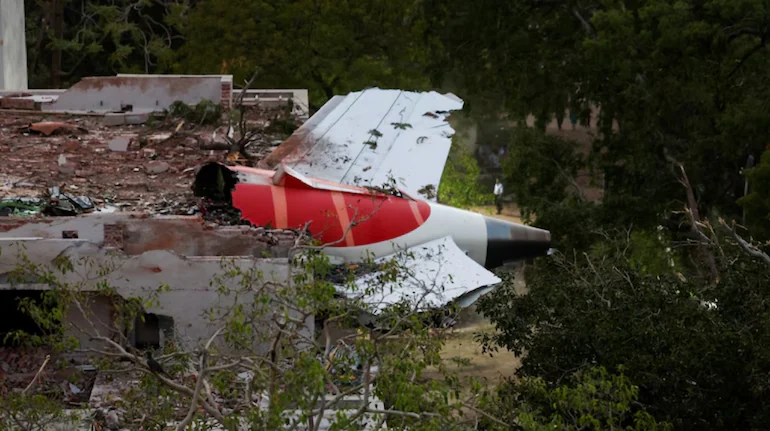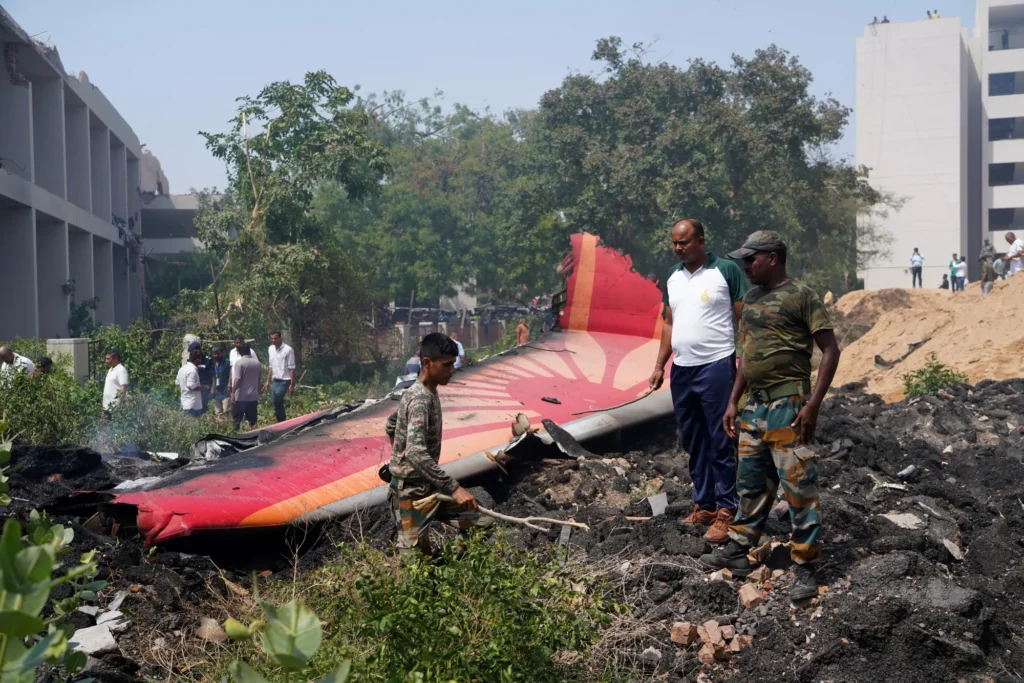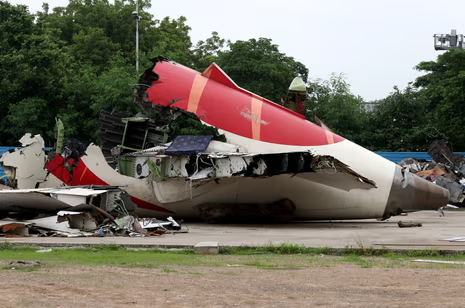From Mayday to Mystery: The Ongoing Search for Answers in AI171 Crash
On June 12, 2025, a terrible tragedy struck Ahmedabad when Air India Flight AI171, a Boeing 787 Dreamliner heading to London, crashed just 30 seconds after take-off. The plane hit a hostel at B.J. Medical College, killing 260 people 241 passengers and crew, plus 19 on the ground. Only one person, Vishwash Kumar Ramesh, survived. A month later, the investigation is still ongoing, with early clues pointing to a mysterious problem with the plane’s fuel switches. Here’s a simple breakdown of what we know, why it matters, and what’s next, written for every Indian to understand.

What Happened That Day?
Flight AI171 took off from Ahmedabad’s Sardar Vallabhbhai Patel Airport at 1:38 PM. It carried 230 passengers, including 13 kids, and 12 crew members. The pilots, Captain Sumeet Sabharwal and First Officer Clive Kunder, were experienced. But seconds after takeoff, the plane sent a “mayday” distress call, saying it lost power. Videos show it climbing only 625 feet before falling, crashing into a hostel, and causing explosions. The crash took the lives of entire families, including that of former Gujarat CM Vijay Rupani, leaving the nation in shock.
The Big Clue: Fuel Switches
A 15-page report from India’s Aircraft Accident Investigation Bureau (AAIB) came out on July 12, 2025. It found something strange: both engines stopped because their fuel control switches, which are like “on-off” buttons in the cockpit, moved from “RUN” to “CUTOFF.” This cut fuel to the engines, making them fail. The pilots noticed—one asked, “Why did you cut off?” and the other said, “I didn’t!” They tried switching them back to “RUN,” and one engine started working again, but it was too late. The plane crashed in under 40 seconds.
These switches have a safety lock to avoid accidental flips, so investigators are puzzled. Was it a mistake by the pilots? A mechanical fault? Or something else? The plane, an 11-year-old Boeing 787, had no major issues before, and its engines were recently checked. Tests also ruled out bad fuel or bird strikes. This makes the crash a big mystery.

Who’s Investigating?
The AAIB is leading the probe, joined by experts from Boeing, GE Aerospace (who made the engines), and teams from the US and UK. They’ve recovered the plane’s black boxes—devices that record flight data and pilot conversations. A cockpit video recorder also gives clues. Tests in Mumbai’s flight simulators show the crash wasn’t just because of landing gear or flaps. Investigators are now checking if an electrical or hydraulic failure played a role. Some wonder about sabotage, but no proof supports this yet. The pilots passed all tests and were rested, so human error is still being studied.
How India and Air India Responded
The crash hit India hard. Air India, now owned by Tata Group, is giving ₹1 crore to families of each deceased passenger and covering medical costs for 67 injured people on the ground. They set up a trust called “AI-171 Trust” to help families long-term and opened hotlines (+91 8062779200 for international, 1800 5691 444 for domestic). Over 400 family members got help in Ahmedabad, and DNA tests identified 119 victims.
Air India checked 26 of its 33 Boeing 787s for safety and cut some international flights. Boeing and GE are helping with the probe, but Boeing’s stock dropped 9% as this was the first fatal crash for a 787 Dreamliner. The Gujarat government acted fast, issuing death certificates and sending 855 health workers to help.

What People Are Saying
The tragedy has sparked grief and anger. Families, like Imtiyaz Ali’s, who lost four loved ones, want clearer answers. On social media like X, some suspect a cover-up, while others, like journalist Shiv Aroor, urge patience. Congress leader Priyanka Gandhi Vadra called for unity and better safety measures. Many worry about India’s aviation safety, as we’re the world’s third-largest domestic flight market, with new airports being built. A Deccan Herald report pointed to weak safety checks, pushing calls for change. Some families are even planning lawsuits against Air India and Boeing.
Why It Matters to India
This crash isn’t just about one flight—it’s about trust in air travel. With millions flying daily, Indians want to know planes are safe. The loss of 260 lives, from kids to elders, feels personal to every community. In Ahmedabad, a city of close-knit families, the pain is deep. The investigation’s findings could change how planes are checked and flown, not just in India but worldwide.

What’s Next?
The final report will take up to a year, but investigators are working hard to solve the fuel switch puzzle. Was it a rare pilot error, a hidden design flaw, or something never seen before? For now, the nation mourns, and families wait for closure. As India grows as a global aviation hub, the lessons from AI171 will shape a safer future for all of us.
Last Updated on: Sunday, July 13, 2025 2:56 am by Shaik Mohammad Hussain | Published by: Shaik Mohammad Hussain on Sunday, July 13, 2025 2:56 am | News Categories: News
About Us: Republic Post covers the latest News on Current News, Business, Sports, Tech, Entertainment, Lifestyle, Automobiles, and more, led by Editor-in-Chief Ankur Srivastava. Stay connected on Facebook, Instagram, LinkedIn, X (formerly Twitter), Google News, and Whatsapp Channel.
Disclaimer: At Republic Post, we are committed to providing accurate, reliable, and thoroughly verified information, sourced from trusted media outlets. For more details, please visit our About, Disclaimer, Terms & Conditions, and Privacy Policy. If you have any questions, feedback, or concerns, feel free to contact us through email.
Contact Us: rishidharqitech@gmail.com